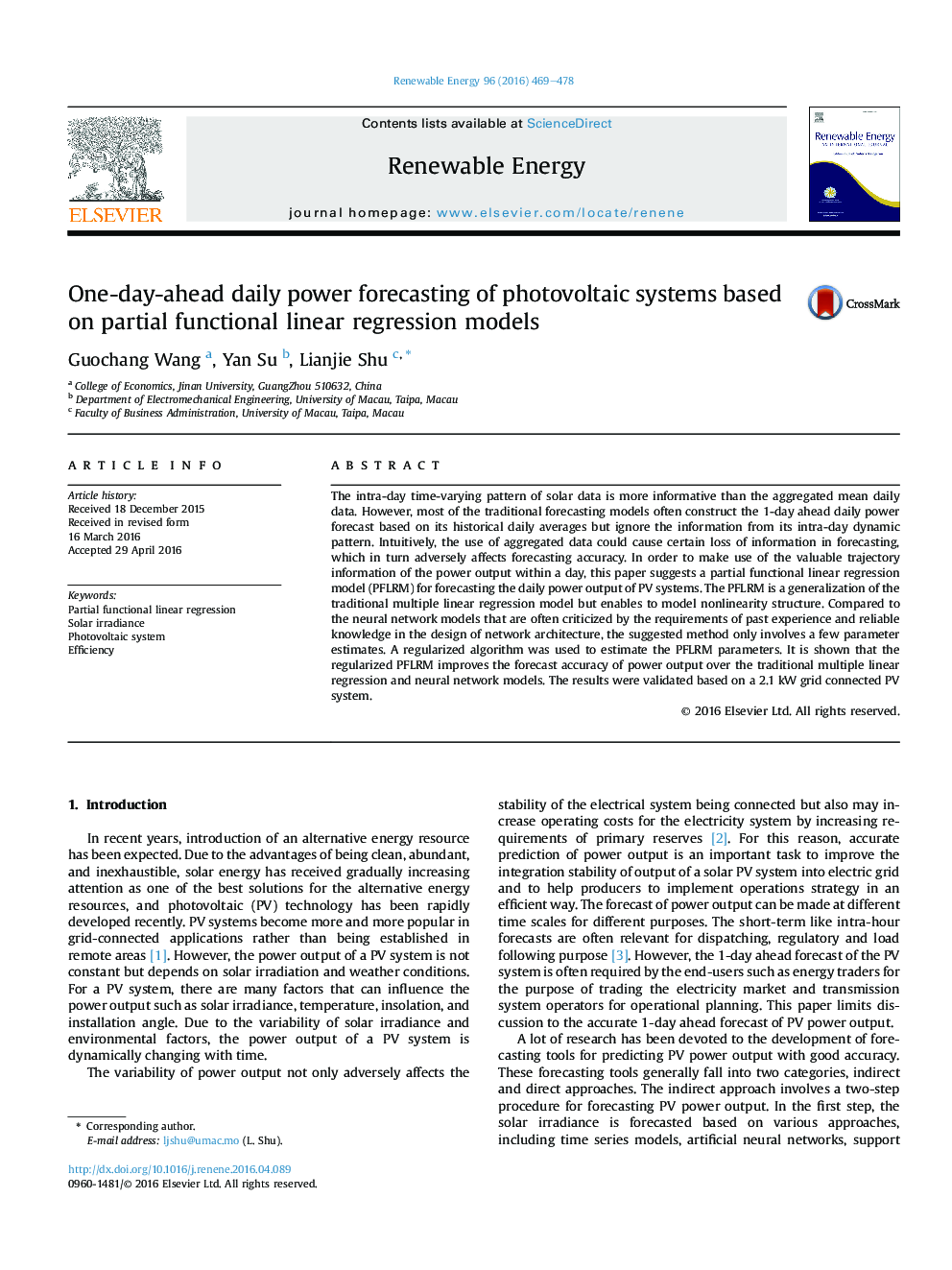| Article ID | Journal | Published Year | Pages | File Type |
|---|---|---|---|---|
| 10293890 | Renewable Energy | 2016 | 10 Pages |
Abstract
The intra-day time-varying pattern of solar data is more informative than the aggregated mean daily data. However, most of the traditional forecasting models often construct the 1-day ahead daily power forecast based on its historical daily averages but ignore the information from its intra-day dynamic pattern. Intuitively, the use of aggregated data could cause certain loss of information in forecasting, which in turn adversely affects forecasting accuracy. In order to make use of the valuable trajectory information of the power output within a day, this paper suggests a partial functional linear regression model (PFLRM) for forecasting the daily power output of PV systems. The PFLRM is a generalization of the traditional multiple linear regression model but enables to model nonlinearity structure. Compared to the neural network models that are often criticized by the requirements of past experience and reliable knowledge in the design of network architecture, the suggested method only involves a few parameter estimates. A regularized algorithm was used to estimate the PFLRM parameters. It is shown that the regularized PFLRM improves the forecast accuracy of power output over the traditional multiple linear regression and neural network models. The results were validated based on a 2.1Â kW grid connected PV system.
Related Topics
Physical Sciences and Engineering
Energy
Renewable Energy, Sustainability and the Environment
Authors
Guochang Wang, Yan Su, Lianjie Shu,
